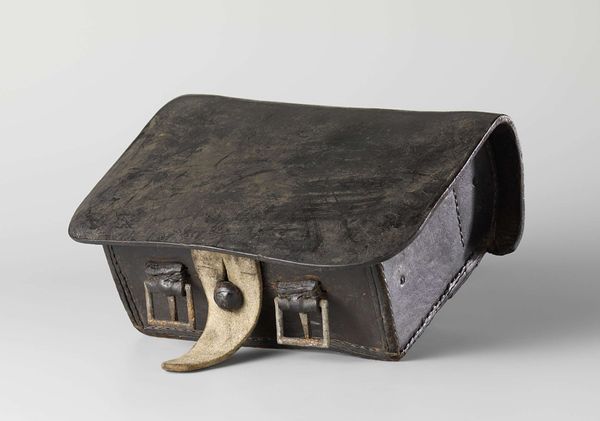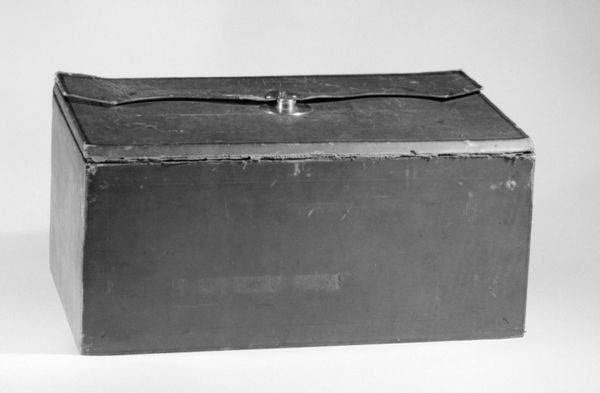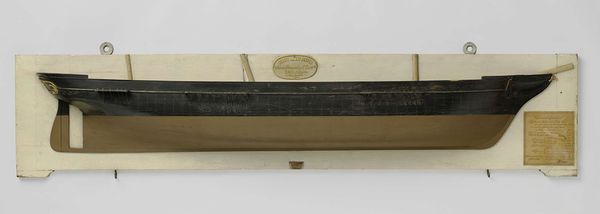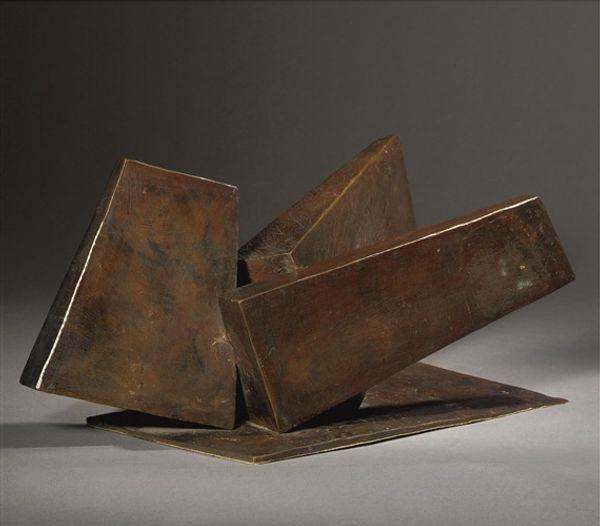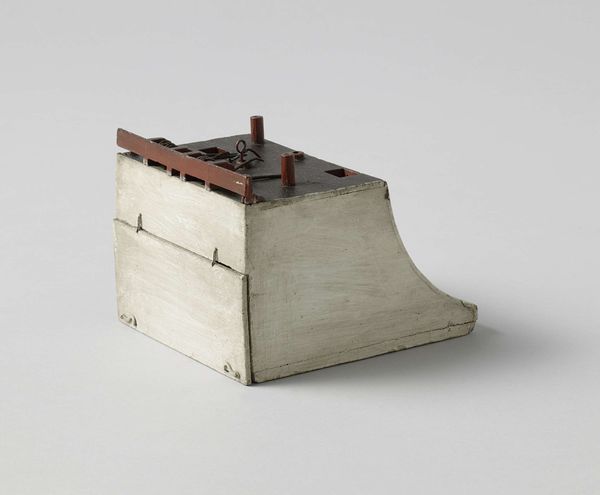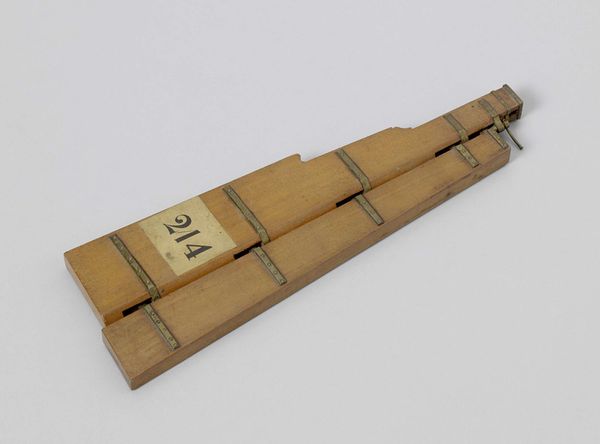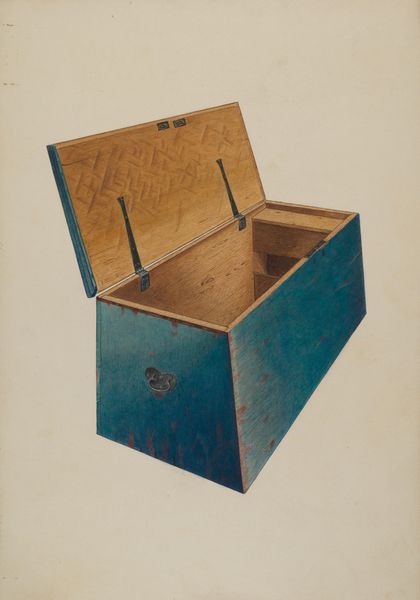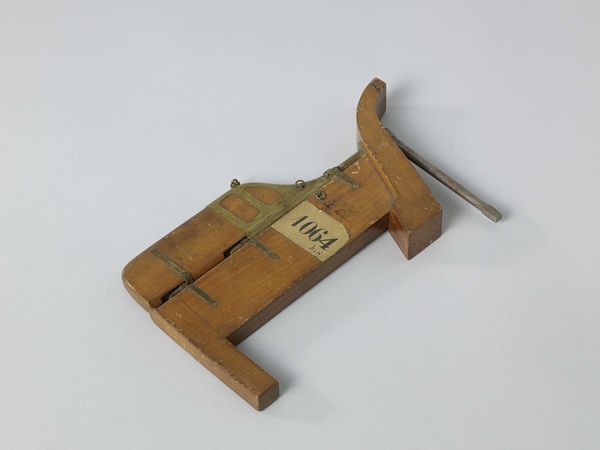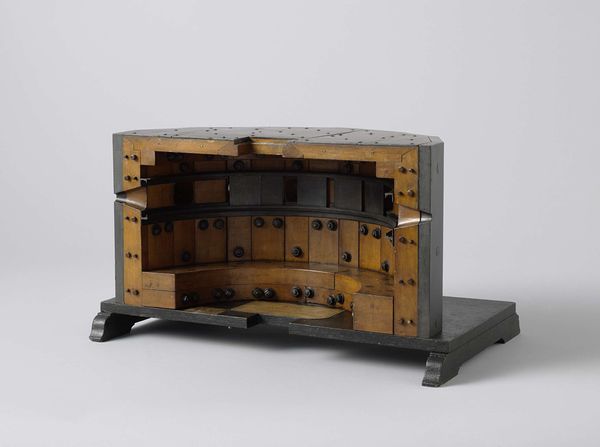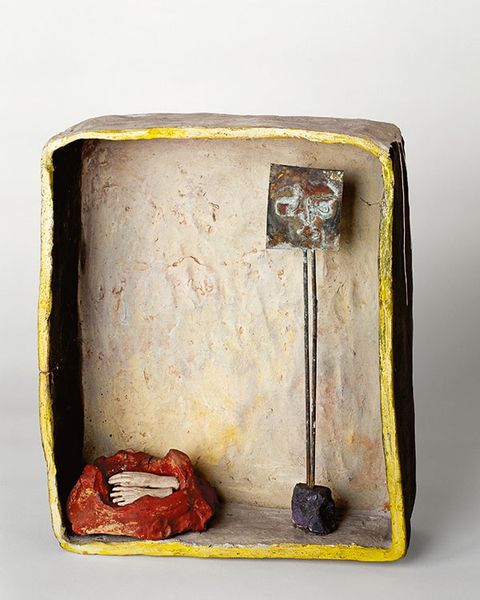
Dimensions: object: 160 x 420 x 160 mm, 2 kg
Copyright: © Estate of Paul Neagu | CC-BY-NC-ND 4.0 DEED, Photo: Tate
Editor: Here we have Paul Neagu's "Palpable Object." It's hard to pin down the date, but the materials - wood, leather, metal - give it a kind of brutal, industrial feel. What social commentary might be embedded in this rather unconventional form? Curator: Consider Neagu’s Romanian background and his critique of totalitarian regimes. The fragmented, almost cobbled-together nature of the object could symbolize the fractured identities and suppressed voices within such systems. Does the restrictive, box-like form suggest societal constraints? Editor: That's a powerful reading. I was only thinking about the materials, but the political dimension makes it much richer. Curator: And how might the title, "Palpable Object," interact with the idea of suppressed realities becoming tangible through art? Editor: I now see how the materials themselves are a language of resilience and resistance. Thanks for opening my eyes. Curator: Likewise, it's crucial to recognize how personal histories shape artistic expression and its reception.
Comments
Join the conversation
Join millions of artists and users on Artera today and experience the ultimate creative platform.
tate 6 months ago
⋮
These two sculptures are variations of Neagu’s ‘tactile’ and ‘palpable’ objects. Both combine textured surfaces with more elaborate imagery and religious symbols. On the top of Tactile Object is a cross made from strips of leather. Palpable Object contains cut-outs in the shape of human figures, giving the box the feeling of a coffin or reliquary. Religious references appear in several of Neagu’s works. In the video of Cake Man Event, also shown in this gallery, the ritualised eating of waffles recalls the Christian Holy Communion. Gallery label, September 2004


